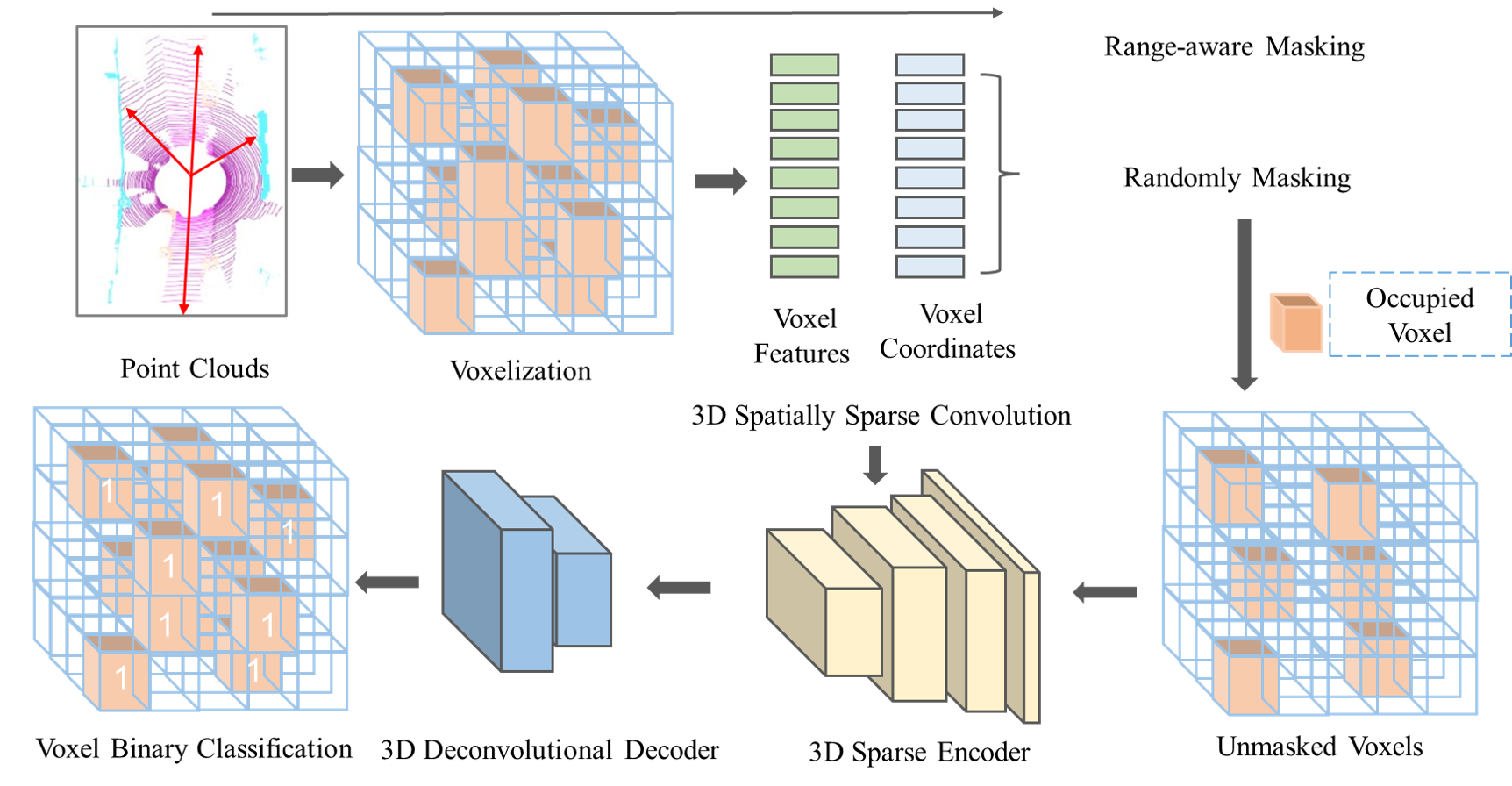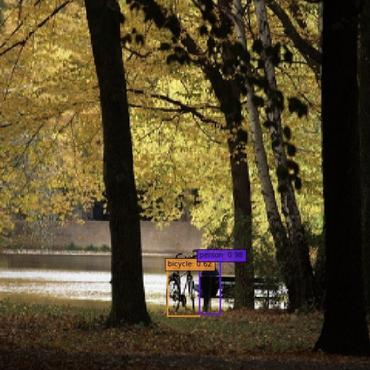Occupancy-MAE: Self-supervised Pre-training Large-scale LiDAR Point Clouds with Masked Occupancy Autoencoders
Current perception models in autonomous driving heavily rely on large-scale labelled 3D data, which is both costly and time-consuming to annotate. This work proposes a solution to reduce the dependence on labelled 3D training data by leveraging pre-training on large-scale unlabeled outdoor LiDAR point clouds using masked autoencoders (MAE). While existing masked point autoencoding methods mainly focus on small-scale indoor point clouds or pillar-based large-scale outdoor LiDAR data, our approach introduces a new self-supervised masked occupancy pre-training method called Occupancy-MAE, specifically designed for voxel-based large-scale outdoor LiDAR point clouds. Occupancy-MAE takes advantage of the gradually sparse voxel occupancy structure of outdoor LiDAR point clouds and incorporates a range-aware random masking strategy and a pretext task of occupancy prediction. By randomly masking voxels based on their distance to the LiDAR and predicting the masked occupancy structure of the entire 3D surrounding scene, Occupancy-MAE encourages the extraction of high-level semantic information to reconstruct the masked voxel using only a small number of visible voxels. Extensive experiments demonstrate the effectiveness of Occupancy-MAE across several downstream tasks. For 3D object detection, Occupancy-MAE reduces the labelled data required for car detection on the KITTI dataset by half and improves small object detection by approximately 2% in AP on the Waymo dataset. For 3D semantic segmentation, Occupancy-MAE outperforms training from scratch by around 2% in mIoU. For multi-object tracking, Occupancy-MAE enhances training from scratch by approximately 1% in terms of AMOTA and AMOTP. Codes are publicly available at https://github.com/chaytonmin/Occupancy-MAE.
PDF Abstract











 KITTI
KITTI
 nuScenes
nuScenes
 ScanNet
ScanNet
 Waymo Open Dataset
Waymo Open Dataset
 ONCE
ONCE